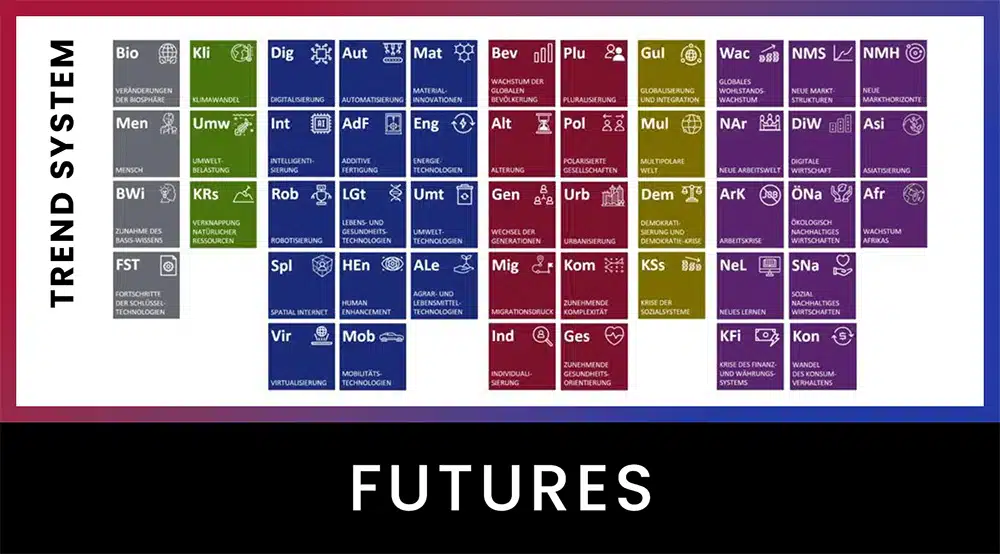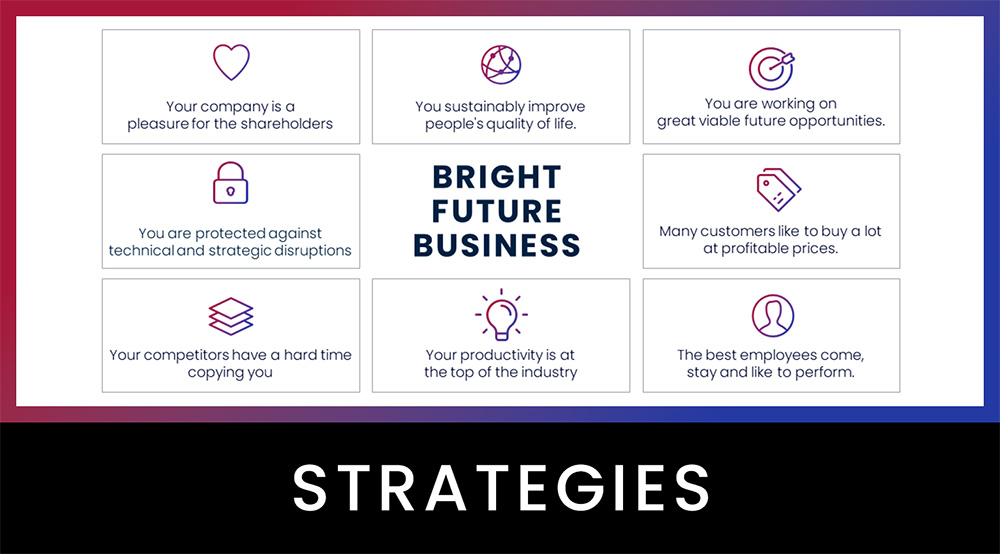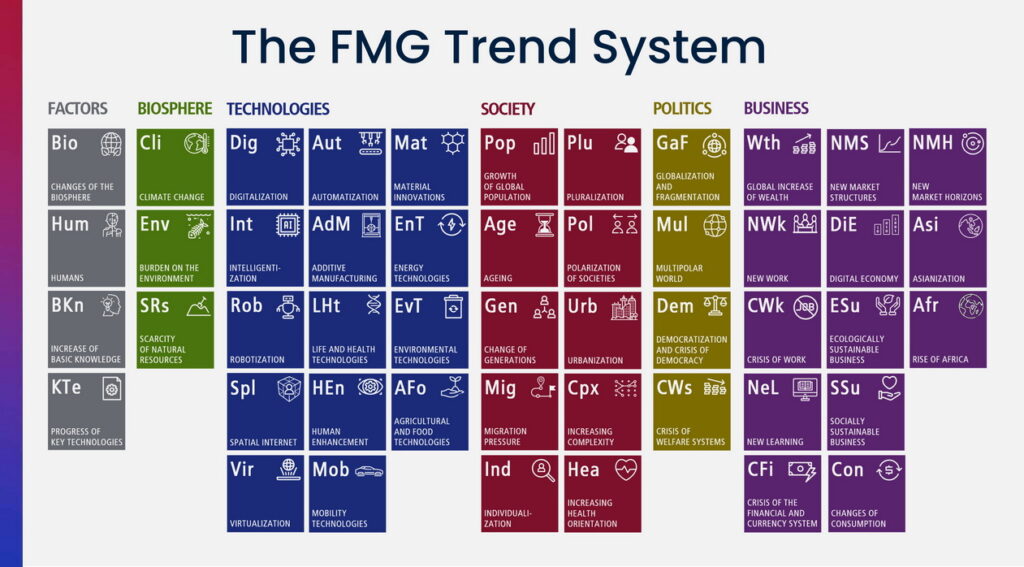Exponential growth through disruptive innovations
We are on the cusp of a new era of exponential growth. ARK Invest’s Big Ideas 2025 report highlights eleven transformative technology fields that have the potential to fundamentally change industries worldwide. These innovations not only open up new opportunities to increase productivity and transform business models, but also help to tackle global challenges such as climate change and healthcare.
For managers, this report is an indispensable resource for recognizing and strategically exploiting the opportunities presented by these developments at an early stage. Those who adapt to these trends in good time can secure competitive advantages and ensure the long-term success of their company in a rapidly changing world.
Economic growth ahead
Historically, technological breakthroughs have led to significant boosts in productivity and economic growth. Past examples show how innovations such as writing, agriculture, electrification and automotive technologies have continuously accelerated global GDP growth. ARK Invest’s forecast predicts that current innovations such as artificial intelligence, autonomous mobility and humanoid robots could lead to a renewed acceleration in growth within the next 5 to 10 years. While the International Monetary Fund (IMF) is forecasting moderate global growth of 3.1%, ARK Invest is predicting significantly higher growth of 7.3% by 2030.
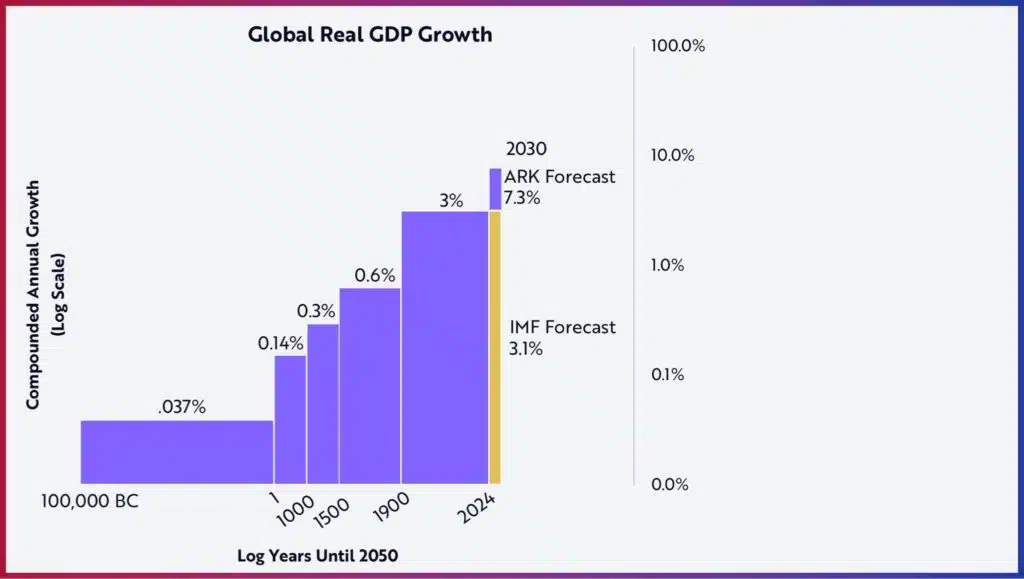
Summary of the 11 technology fields:
1. Convergence: Advances in AI, blockchain, robotics and energy storage are working together to create exponential growth opportunities. This convergence is enabling the development of new, cross-platform business models that could redefine traditional industries such as healthcare, finance and mobility.
2 AI agents: AI agents such as chatbots and software assistants are evolving from reactive systems to proactive problem solvers. These technologies will increasingly be able to make complex decisions, understand human behavior and automate processes in production, customer service and research.
3 Bitcoin: Bitcoin remains the forerunner among cryptocurrencies and is increasingly seen as “digital gold”. Its adoption is expected to increase due to technological improvements such as the Lightning Network, which could establish Bitcoin not only as a store of value but also as a global payment network.
4. Stablecoins: These digital currencies linked to fiat currencies or commodities could bridge the gap between traditional financial systems and decentralized cryptocurrencies. They enable frictionless international transfers, promote financial inclusion and could play a crucial role in economically unstable regions.
5. Scaling blockchains: Advances such as layer 2 solutions and sharding increase the efficiency and capacity of blockchains, enabling billions of transactions. This lays the foundation for transforming traditional industries such as financial services, supply chain management and healthcare by making processes more transparent, faster and fully decentralized.
6 Robotaxis: Self-driving vehicles that operate without a driver could revolutionize urban traffic. They promise not only cost savings, but also a reduction in traffic congestion, increased safety and improved accessibility for people without a driver’s license.
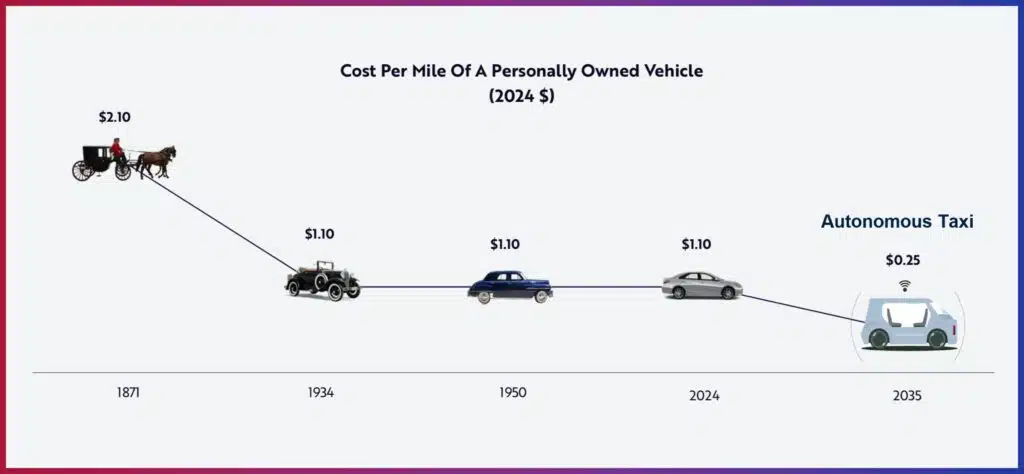
7. Autonomous logistics: delivery vehicles and drones could realize a “just-in-time” supply chain through autonomous technologies. This not only reduces costs, but also CO₂ emissions, which could lead to a sustainable transformation, particularly in the e-commerce sector
8. Energy storage: advances in lithium-ion and solid-state batteries and hydrogen storage are improving energy density and reducing costs. These innovations support the widespread introduction of electric vehicles and the integration of renewable energy sources into global grids.
9 Robotics: Advances in sensor technology, AI and machine learning enable robots to perform complex tasks more precisely. In the future, humanoid robots will be able to work side by side with humans and move around existing infrastructure. This will be used in areas such as elderly care and manufacturing, which can increase productivity and reduce the workload of the workforce.
Cost-benefit analysis: use of humanoid robots
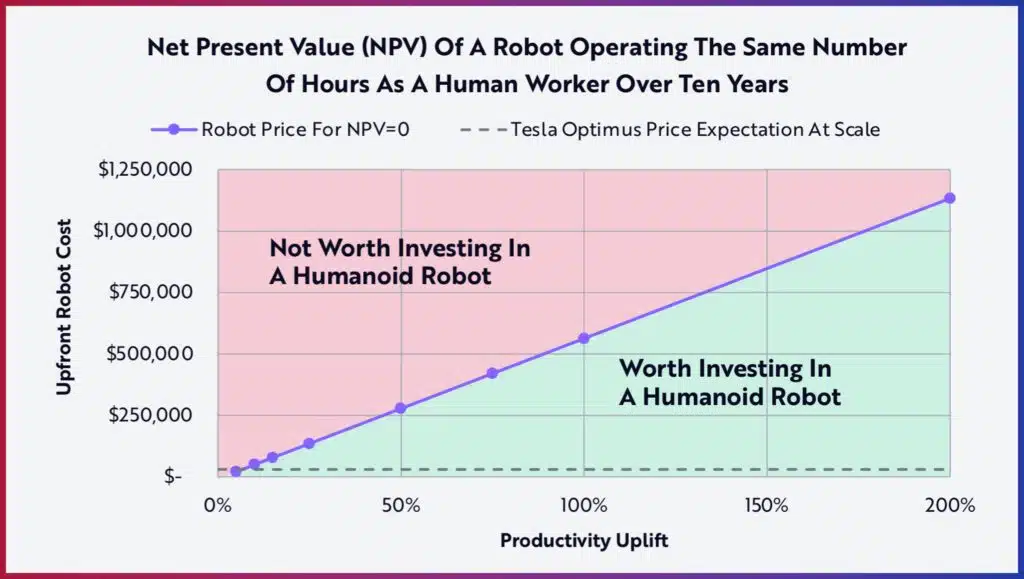
10. Reusable rockets: The reusability of spacecraft significantly reduces the cost per launch and opens up new perspectives for research and the space economy. This could accelerate the exploitation of extraterrestrial resources and the development of communication networks in space.
SpaceX has revolutionized the economics of space launches and set new standards in space travel by drastically reducing the turnaround time and cost of reusable rocket stages.
11. Multiomics: The combination of biological data sources enables deeper insights into the functioning of the human body. Multiomics technologies could lead to more accurate diagnoses and personalized therapies, especially for genetic diseases, setting new milestones in precision medicine. Advances in sequencing and data analysis reduce costs and promote innovations such as comprehensive blood tests for early cancer detection. AI-supported laboratories could also revolutionize drug development.





















